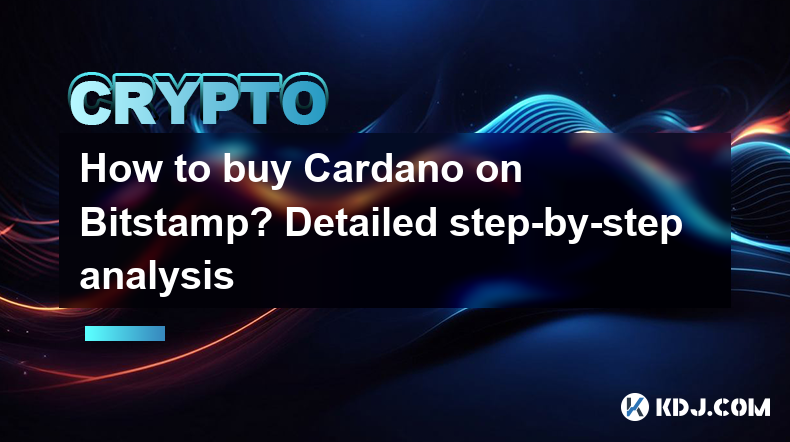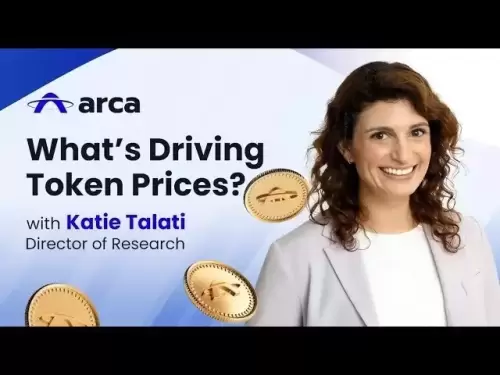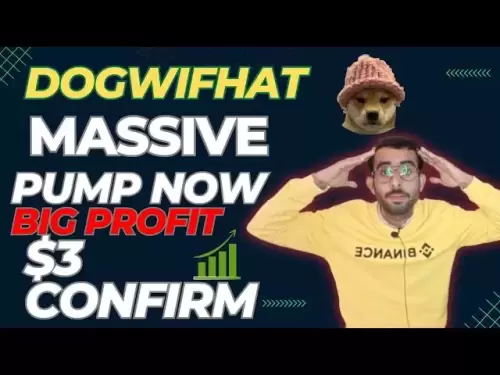-
 Bitcoin
Bitcoin $107,275.1551
-0.32% -
 Ethereum
Ethereum $2,485.3056
1.77% -
 Tether USDt
Tether USDt $1.0005
0.03% -
 XRP
XRP $2.2223
1.31% -
 BNB
BNB $657.7608
1.39% -
 Solana
Solana $156.3566
3.02% -
 USDC
USDC $0.9999
0.01% -
 TRON
TRON $0.2791
1.09% -
 Dogecoin
Dogecoin $0.1651
0.45% -
 Cardano
Cardano $0.5738
2.78% -
 Hyperliquid
Hyperliquid $40.2672
5.82% -
 Bitcoin Cash
Bitcoin Cash $517.5487
5.30% -
 Sui
Sui $2.7981
-0.40% -
 Chainlink
Chainlink $13.3500
-0.36% -
 UNUS SED LEO
UNUS SED LEO $9.1220
1.12% -
 Avalanche
Avalanche $17.9515
-0.32% -
 Stellar
Stellar $0.2361
-0.44% -
 Toncoin
Toncoin $2.9423
2.33% -
 Shiba Inu
Shiba Inu $0.0...01145
-0.68% -
 Litecoin
Litecoin $86.1693
-0.63% -
 Hedera
Hedera $0.1493
0.64% -
 Monero
Monero $315.1374
1.81% -
 Polkadot
Polkadot $3.4002
-0.73% -
 Dai
Dai $1.0001
0.03% -
 Bitget Token
Bitget Token $4.5413
-1.35% -
 Ethena USDe
Ethena USDe $1.0002
-0.01% -
 Uniswap
Uniswap $7.1733
-0.57% -
 Aave
Aave $274.0465
-0.23% -
 Pepe
Pepe $0.0...09810
2.24% -
 Pi
Pi $0.5101
-3.10%
How to buy Cardano on Bitstamp? Detailed step-by-step analysis
To buy Cardano on Bitstamp, create an account, fund it via bank transfer or card, and execute a trade using market or limit orders, ensuring to secure your ADA afterward.
Apr 04, 2025 at 03:14 pm

Buying Cardano (ADA) on Bitstamp is a straightforward process, but it requires careful attention to detail to ensure a smooth transaction. Bitstamp, one of the oldest and most reputable cryptocurrency exchanges, offers a user-friendly platform for trading various cryptocurrencies, including Cardano. This article will guide you through the process of purchasing Cardano on Bitstamp, from setting up an account to executing your first trade. Whether you're a beginner or an experienced trader, following these steps will help you navigate the platform efficiently and securely.
Setting Up a Bitstamp Account
Before you can buy Cardano on Bitstamp, you need to create an account. Here's how to do it:
- Visit the Bitstamp website: Go to www.bitstamp.net and click on the "Register" button at the top right corner of the page.
- Fill out the registration form: Enter your email address, choose a strong password, and select your country of residence. Make sure to use a secure email address that you have access to.
- Verify your email: After submitting the form, you'll receive an email from Bitstamp with a verification link. Click on the link to confirm your email address.
- Complete the KYC process: To comply with regulatory requirements, Bitstamp requires you to complete a Know Your Customer (KYC) verification. You'll need to provide personal information, including your full name, date of birth, and address. You may also need to upload a government-issued ID and a proof of address document.
- Wait for approval: Once you've submitted all the required information, Bitstamp will review your application. This process can take anywhere from a few hours to a few days, depending on the volume of applications.
Funding Your Bitstamp Account
After your account is approved, you need to deposit funds to buy Cardano. Bitstamp supports various deposit methods, including bank transfers, credit/debit cards, and cryptocurrency deposits. Here's how to fund your account:
- Log in to your Bitstamp account: Use the email and password you provided during registration.
- Navigate to the "Deposit" section: Click on the "Deposit" button in the top menu.
- Choose your deposit method: Select the method that suits you best. For buying Cardano, you'll likely want to use a bank transfer or a credit/debit card.
- Enter the deposit amount: Specify how much money you want to deposit. Keep in mind that there may be minimum and maximum deposit limits, depending on your chosen method.
- Follow the instructions: Depending on your chosen method, you'll need to follow specific instructions to complete the deposit. For bank transfers, you'll need to provide your bank details and initiate the transfer. For credit/debit cards, you'll need to enter your card information and confirm the transaction.
- Wait for the funds to arrive: The time it takes for the funds to appear in your Bitstamp account varies depending on the deposit method. Bank transfers can take several business days, while credit/debit card deposits are usually instant.
Buying Cardano on Bitstamp
Once your account is funded, you can proceed to buy Cardano. Here's a step-by-step guide:
- Navigate to the trading page: Click on the "Trade" button in the top menu, then select "ADA/USD" or "ADA/EUR" depending on your preferred trading pair.
- Choose your order type: Bitstamp offers two main order types: market orders and limit orders. A market order will execute immediately at the current market price, while a limit order allows you to set a specific price at which you want to buy Cardano.
- Enter the amount: Specify how much Cardano you want to buy. You can enter the amount in either ADA or your chosen fiat currency (USD or EUR).
- Review and submit your order: Double-check all the details, including the order type, amount, and price (if applicable). Once you're satisfied, click on the "Buy ADA" button to submit your order.
- Wait for the order to be filled: If you placed a market order, it should be filled almost instantly. If you placed a limit order, it will be filled when the market reaches your specified price.
Securing Your Cardano
After buying Cardano on Bitstamp, it's crucial to secure your investment. Here are some steps to ensure the safety of your ADA:
- Enable two-factor authentication (2FA): Bitstamp offers 2FA to add an extra layer of security to your account. You can enable it in the "Security" section of your account settings.
- Use a strong password: Make sure your Bitstamp password is long, complex, and unique. Avoid using easily guessable information like birthdays or common words.
- Withdraw your Cardano to a secure wallet: While Bitstamp is a reputable exchange, it's generally safer to store your cryptocurrencies in a personal wallet. You can withdraw your Cardano to a hardware wallet, software wallet, or paper wallet for long-term storage.
- Keep your private keys safe: If you choose to use a personal wallet, make sure to keep your private keys secure. Never share them with anyone, and consider using a secure method to store them, such as a safe or a secure note-taking app.
Monitoring Your Cardano Investment
Once you've bought and secured your Cardano, it's important to keep an eye on your investment. Here are some tips for monitoring your Cardano on Bitstamp:
- Use the Bitstamp trading interface: Bitstamp provides a user-friendly trading interface that allows you to track the price of Cardano in real-time. You can access it by clicking on the "Trade" button and selecting the ADA/USD or ADA/EUR trading pair.
- Set up price alerts: Bitstamp allows you to set up price alerts for Cardano. You can receive notifications via email or SMS when the price reaches a certain level, helping you stay informed about market movements.
- Keep up with Cardano news and developments: Stay informed about the latest news and developments related to Cardano. You can follow official Cardano social media accounts, subscribe to newsletters, and join online communities to stay up-to-date.
- Regularly review your portfolio: Periodically review your Cardano holdings and assess your investment strategy. Consider factors such as your risk tolerance, investment goals, and market conditions when making decisions about your Cardano investment.
Common Questions About Buying Cardano on Bitstamp
Q: Is Bitstamp a safe platform to buy Cardano?
A: Bitstamp is considered a safe and reputable exchange for buying Cardano. It has been operating since 2011 and has a strong track record of security and compliance. However, it's always important to take precautions, such as enabling 2FA and using a strong password, to protect your account.
Q: What are the fees for buying Cardano on Bitstamp?
A: Bitstamp charges a trading fee for buying Cardano, which varies depending on your trading volume and whether you're a maker or a taker. The fee structure is available on the Bitstamp website. Additionally, there may be deposit and withdrawal fees, depending on the method you use.
Q: Can I buy Cardano with a credit card on Bitstamp?
A: Yes, Bitstamp allows you to buy Cardano using a credit or debit card. This option is available in the "Deposit" section of your account. Keep in mind that there may be fees associated with using a credit card, and the transaction may be subject to your card issuer's policies.
Q: How long does it take to buy Cardano on Bitstamp?
A: The time it takes to buy Cardano on Bitstamp depends on several factors, including the deposit method you use and the type of order you place. If you deposit funds using a credit card, the process can be relatively quick. However, if you use a bank transfer, it may take several business days for the funds to arrive in your account. Once your account is funded, placing a market order to buy Cardano is usually instant.
Q: Can I withdraw my Cardano from Bitstamp to a personal wallet?
A: Yes, you can withdraw your Cardano from Bitstamp to a personal wallet. To do so, navigate to the "Withdraw" section of your account, select Cardano as the cryptocurrency, and enter the address of your personal wallet. Keep in mind that there may be a withdrawal fee, and the transaction may take some time to process on the Cardano blockchain.
Disclaimer:info@kdj.com
The information provided is not trading advice. kdj.com does not assume any responsibility for any investments made based on the information provided in this article. Cryptocurrencies are highly volatile and it is highly recommended that you invest with caution after thorough research!
If you believe that the content used on this website infringes your copyright, please contact us immediately (info@kdj.com) and we will delete it promptly.
- Coinbase, Altcoins, and Listings: What's the Buzz?
- 2025-07-01 00:30:11
- Chainlink's Bullish Signals: Investors Bet on Long-Term Value
- 2025-07-01 00:50:12
- CICADA Finance Soars on BNB Chain: A TGE Deep Dive
- 2025-07-01 01:30:11
- MicroStrategy's Bitcoin Bet: Holdings, Sell-Off Concerns, and S&P 500 Dreams
- 2025-07-01 01:30:11
- XRPL EVM Sidechain: Ethereum dApps Unleashed on XRP Ledger!
- 2025-07-01 01:35:11
- Bybit, Kraken, and Tokenized Stocks: A New Era for Trading?
- 2025-07-01 00:30:11
Related knowledge

How to customize USDT TRC20 mining fees? Flexible adjustment tutorial
Jun 13,2025 at 01:42am
Understanding USDT TRC20 Mining FeesMining fees on the TRON (TRC20) network are essential for processing transactions. Unlike Bitcoin or Ethereum, where miners directly validate transactions, TRON uses a delegated proof-of-stake (DPoS) mechanism. However, users still need to pay bandwidth and energy fees, which are collectively referred to as 'mining fe...

USDT TRC20 transaction is stuck? Solution summary
Jun 14,2025 at 11:15pm
Understanding USDT TRC20 TransactionsWhen users mention that a USDT TRC20 transaction is stuck, they typically refer to a situation where the transfer of Tether (USDT) on the TRON blockchain has not been confirmed for an extended period. This issue may arise due to various reasons such as network congestion, insufficient transaction fees, or wallet-rela...

How to cancel USDT TRC20 unconfirmed transactions? Operation guide
Jun 13,2025 at 11:01pm
Understanding USDT TRC20 Unconfirmed TransactionsWhen dealing with USDT TRC20 transactions, it’s crucial to understand what an unconfirmed transaction means. An unconfirmed transaction is one that has been broadcasted to the blockchain network but hasn’t yet been included in a block. This typically occurs due to low transaction fees or network congestio...

How to check USDT TRC20 balance? Introduction to multiple query methods
Jun 21,2025 at 02:42am
Understanding USDT TRC20 and Its ImportanceUSDT (Tether) is one of the most widely used stablecoins in the cryptocurrency market. It exists on multiple blockchain networks, including TRC20, which operates on the Tron (TRX) network. Checking your USDT TRC20 balance accurately is crucial for users who hold or transact with this asset. Whether you're sendi...

What to do if USDT TRC20 transfers are congested? Speed up trading skills
Jun 13,2025 at 09:56am
Understanding USDT TRC20 Transfer CongestionWhen transferring USDT TRC20, users may occasionally experience delays or congestion. This typically occurs due to network overload on the TRON blockchain, which hosts the TRC20 version of Tether. Unlike the ERC20 variant (which runs on Ethereum), TRC20 transactions are generally faster and cheaper, but during...

The relationship between USDT TRC20 and TRON chain: technical background analysis
Jun 12,2025 at 01:28pm
What is USDT TRC20?USDT TRC20 refers to the Tether (USDT) token issued on the TRON blockchain using the TRC-20 standard. Unlike the more commonly known ERC-20 version of USDT (which runs on Ethereum), the TRC-20 variant leverages the TRON network's infrastructure for faster and cheaper transactions. The emergence of this version came as part of Tether’s...

How to customize USDT TRC20 mining fees? Flexible adjustment tutorial
Jun 13,2025 at 01:42am
Understanding USDT TRC20 Mining FeesMining fees on the TRON (TRC20) network are essential for processing transactions. Unlike Bitcoin or Ethereum, where miners directly validate transactions, TRON uses a delegated proof-of-stake (DPoS) mechanism. However, users still need to pay bandwidth and energy fees, which are collectively referred to as 'mining fe...

USDT TRC20 transaction is stuck? Solution summary
Jun 14,2025 at 11:15pm
Understanding USDT TRC20 TransactionsWhen users mention that a USDT TRC20 transaction is stuck, they typically refer to a situation where the transfer of Tether (USDT) on the TRON blockchain has not been confirmed for an extended period. This issue may arise due to various reasons such as network congestion, insufficient transaction fees, or wallet-rela...

How to cancel USDT TRC20 unconfirmed transactions? Operation guide
Jun 13,2025 at 11:01pm
Understanding USDT TRC20 Unconfirmed TransactionsWhen dealing with USDT TRC20 transactions, it’s crucial to understand what an unconfirmed transaction means. An unconfirmed transaction is one that has been broadcasted to the blockchain network but hasn’t yet been included in a block. This typically occurs due to low transaction fees or network congestio...

How to check USDT TRC20 balance? Introduction to multiple query methods
Jun 21,2025 at 02:42am
Understanding USDT TRC20 and Its ImportanceUSDT (Tether) is one of the most widely used stablecoins in the cryptocurrency market. It exists on multiple blockchain networks, including TRC20, which operates on the Tron (TRX) network. Checking your USDT TRC20 balance accurately is crucial for users who hold or transact with this asset. Whether you're sendi...

What to do if USDT TRC20 transfers are congested? Speed up trading skills
Jun 13,2025 at 09:56am
Understanding USDT TRC20 Transfer CongestionWhen transferring USDT TRC20, users may occasionally experience delays or congestion. This typically occurs due to network overload on the TRON blockchain, which hosts the TRC20 version of Tether. Unlike the ERC20 variant (which runs on Ethereum), TRC20 transactions are generally faster and cheaper, but during...

The relationship between USDT TRC20 and TRON chain: technical background analysis
Jun 12,2025 at 01:28pm
What is USDT TRC20?USDT TRC20 refers to the Tether (USDT) token issued on the TRON blockchain using the TRC-20 standard. Unlike the more commonly known ERC-20 version of USDT (which runs on Ethereum), the TRC-20 variant leverages the TRON network's infrastructure for faster and cheaper transactions. The emergence of this version came as part of Tether’s...
See all articles

























































































